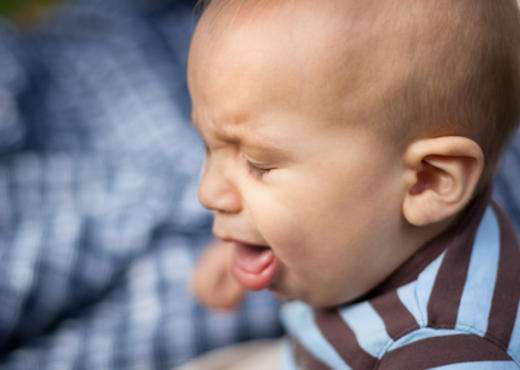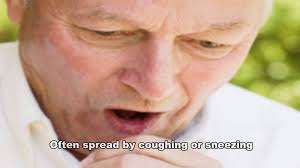YOUR CART
- No products in the cart.
Subtotal:
₹0.00
BEST SELLING PRODUCTS
Whooping cough (pertussis) is highly contagious respiratory tract infection.In many people it is marked by a severe hacking coughfollowed by a high-pitched intake of breath that sounds like “whoop”.

What are the symptoms of Whooping Cough?
*Runny nose * Nasal congestion * Red,watery eyes * Fever * Cough…………..
After a weekor two ,signs and symptoms worsen.Thick mucus accumulates inside the airways,causing uncontrollable coughing.Severe and prolonged coughing attacks may :
Note:-
The coughing may last for 10 or more weeks, hence the phrase “100-day cough”. A person may cough so hard that they vomit, break ribs, or become very tired from the effort. Children less than one year old may have little or no cough and instead have periods where they do not breathe. The time between infection and the onset of symptoms is usually seven to ten days. Disease may occur in those who have been vaccinated, but symptoms are typically milder.

What are the causes of Whooping Cough?
Whopping cough /Pertussis is caused by the bacterium Bordetella pertussis. It is an airborne which spreads easily through the coughs and sneezes of an infected person. People are infectious from the start of symptoms until about three weeks into the coughing fits. Diagnosis is by collecting a sample from the back of the nose and throat. This sample can then be tested by eitherculture or by polymerase chain reaction.
When an infected person coughs or sneezes ,tiny germ-laden droplets are sprayed into the air and breathed into the lungs of anyone happens to be nearby.
What are other signs of Pertussis/Whooping Cough?
The classic symptoms of pertussis are a paroxysmal cough, inspiratory whoop, andfainting, or vomiting after coughing. The cough from pertussis has been reported to cause subconjuctival hemorrhages, rib fractures, urinary incontinence, hernias, and vertebral artery dissection. Violent coughing can cause the pleura to rupture, leading to a pneumothorax. Vomiting after a coughing spell or an inspiratory whooping sound on coughing, almost doubles the likelihood that the illness is pertussis. The absence of a paroxysmal cough or posttussive emesis, though, makes it almost half as likely.
The illness usually starts with mild respiratory symptoms include mild coughing, sneezing, or a runny. This is known as thecatarrhal stage. After one to two weeks, the coughing classically develops into uncontrollable fits, followed by a high-pitched “whoop” sound in younger children, or a gasping sound in older children, as the person tries to inhale ( paroxysmal stage).
This stage usually lasts two to eight weeks, or sometimes longer. A gradual transition then occurs to the convalescent stage, which usually lasts one to four weeks. This stage is marked by a decrease in paroxysms of coughing, although paroxysms may occur with subsequent respiratory infection for many months after the onset of pertussis.
What are the Preventive measures against Pertussis/Whooping Cough?
The primary method of prevention for pertussis/whooping cough is vaccination. Evidence is insufficient to determine the effectiveness of bacteriostatic antibiotics in those who have been exposed, but are without symptoms. Preventive antibiotics, however, are still frequently used in those who have been exposed and are at high risk of severe disease (such as infants).
Vaccine
Pertussis vaccines are effective at preventing illness and are recommended for routine use by the World Health Organisation (WHO). Despite widespread vaccination, however, pertussis/whooping cough has persisted in vaccinated populations and is today “one of the most common vaccine-preventable diseases. Immunization does not confer lifelong immunity.
An effect of widespread immunization on society has been the shift of reported infections from children aged 1-9 years to infants, adolescents, and adults, with adolescents and adults acting as reservoirs for B. pertussis and infecting infants who have had fewer than three doses of vaccine.
Infection induces incomplete natural immunity that wanes over time. Some studies have suggested that while acellular pertussis vaccines are effective preventing the disease, they have a limited impact on infection and transmission, meaning that vaccinated people could spread the pertussis even though they may have only mild symptoms or none at all.
What are the available Treatments for Pertussis/Whooping Cough?
The antibiotics are effective. However their after effects leave much to be further treatable.
A reasonable guideline is to treat people age >1 year within 3 weeks of cough onset and infants age <1 year and pregnant women within 6 weeks of cough onset. If the person is diagnosed late, antibiotics will not alter the course of the illness, and even without antibiotics, they should no longer be spreading pertussis/whooping cough. When used early, antibiotics decrease the duration of infectiousness, and thus prevent spread.
To boost the alveolar immunity and resistance of epithelia against pertussis/whooping cough :-

Rx GOJIHVAADI Quaath (syrup) 1/2 to1 teaspoonful frquently to the affected infants and children at interval of 30 minutes to 1 hour with pre-boiled and natural warm water,followed by
EXHAIN syrup ½ to 1 teaspoon with pre-boiled and natural warm water to help soothing expectoration and giving relief to tracheo-bronchial tree and alveoli.


Rx HEMOCLIN-T 1 to 3 tablets three to four times a day to combat infections without side effects.